“You never see the same flame twice.”
“I want to cherish indefinite things as they will eventually disappear.”
We were drawn to these words written on the website of Japanese candlemaker HAZE and visited his shop.
Kawagoe City in Saitama Prefecture flourished as a castle town during the Edo period and then as a commercial town after the Meiji period. The city still has many old merchant warehouses and the town is popular among tourists who come to visit the historic cityscape.
The HAZE store and workshop is located in an renovated traditional house not far from Kawagoe Ichibangai (mainstreet).
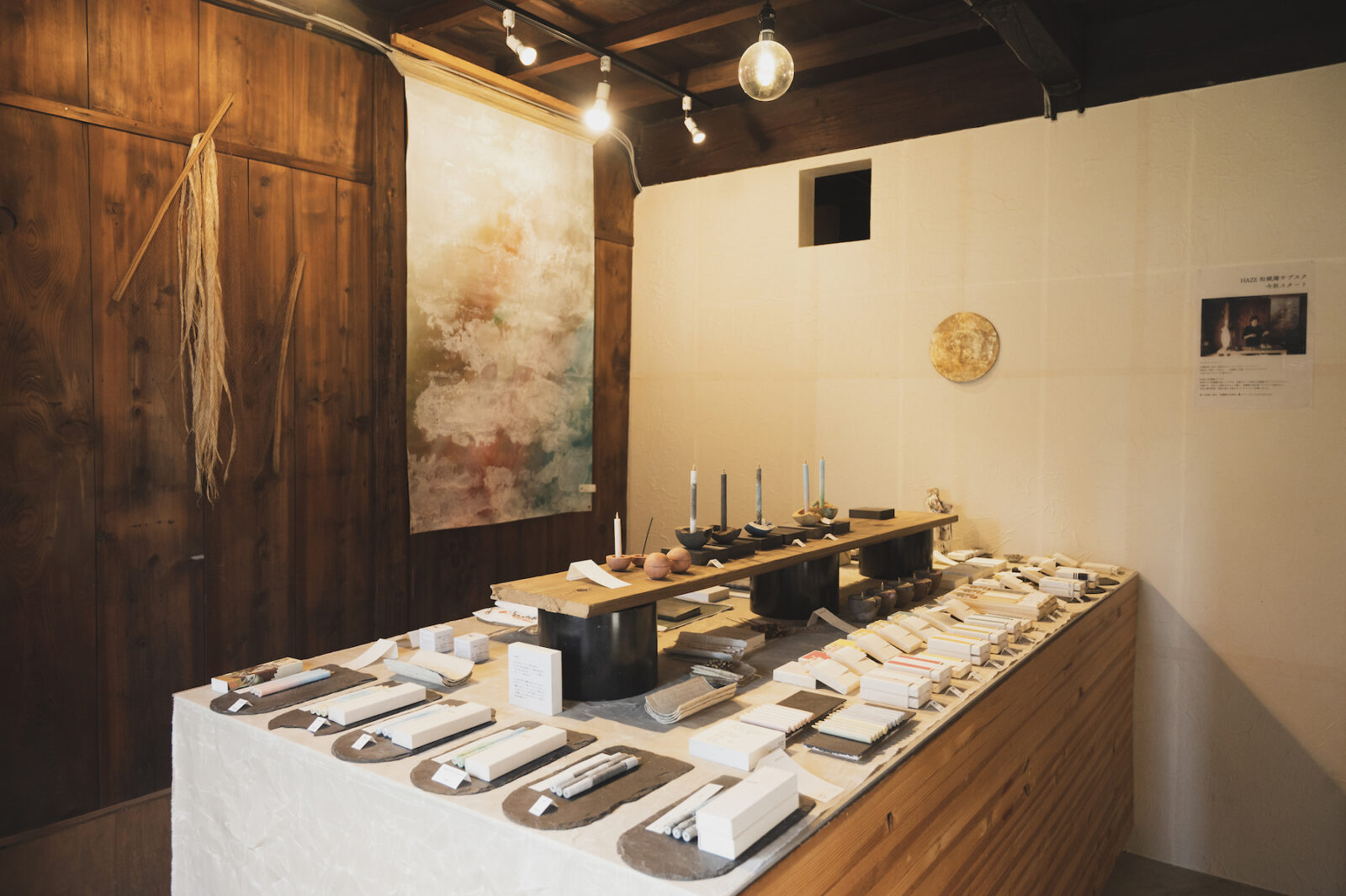
“After the Great East Japan Earthquake, I wanted to devote my life to doing something that would help others, so I started making Japanese candles.”
Keisuke Haze is the president of HAZE. He grew up with Japanese candles and began making them in 2012. Why did he quit his job as a film producer to make Japanese candles? We asked him about what makes Japanese candles special and how Japanese candles create a unique moment in time.
The Japanese candle flame’s unique size and flickering
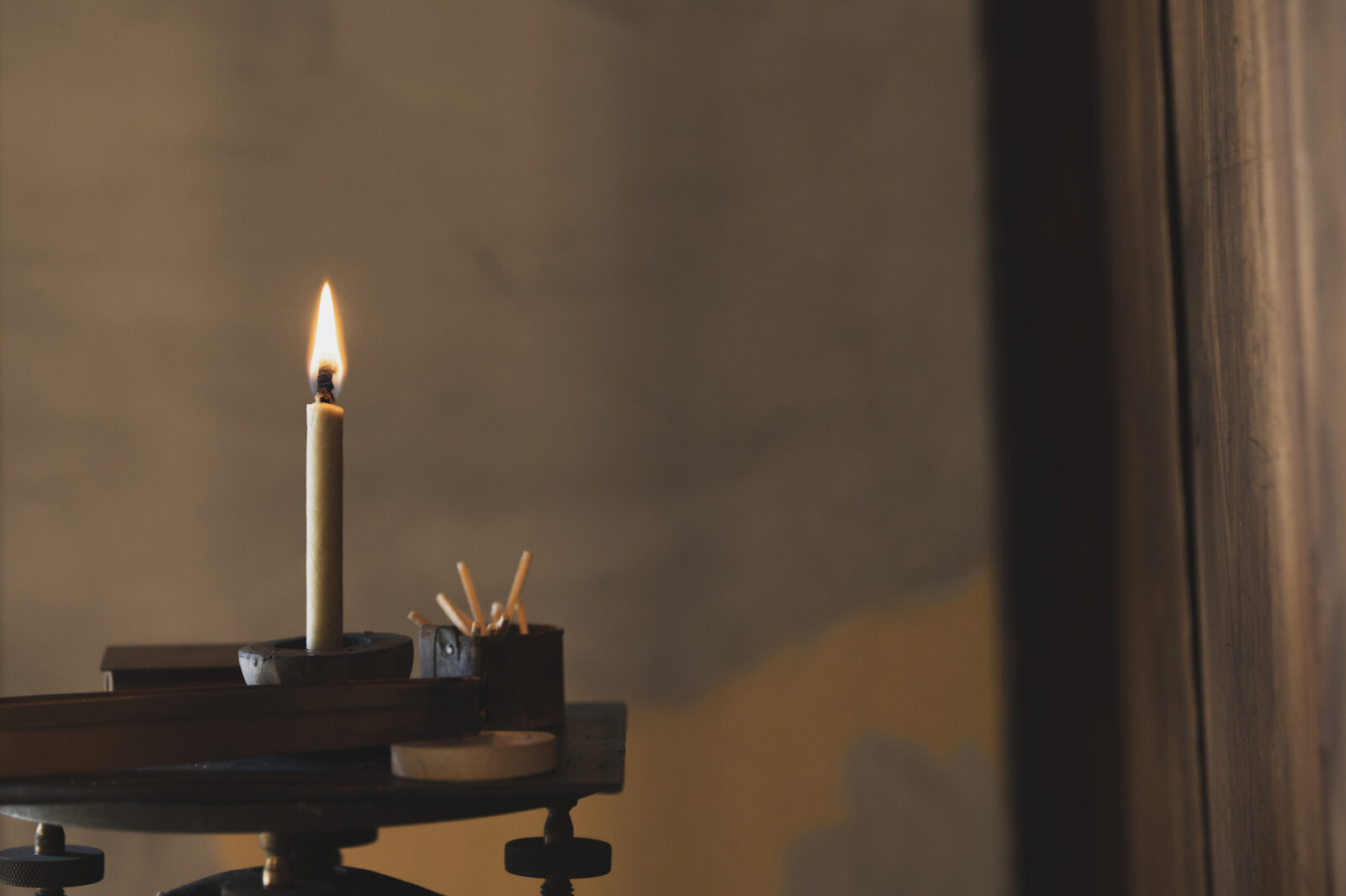
Today, most candles in Japan are western-style candles made from petroleum-based wax that is poured into molds. However, candles in Japan used to be made from “haze” wax, which is extracted from the fruits of a sumac tree (wax tree).
It is said that the first candles in Japan were beeswax candles imported from China during the Nara period (710-794). Japanese candles began being made out of haze and lacquer in the Muromachi period (1336-1573). At that time, candles were still a luxury item and were only used by a few nobles and temples for lighting. It is said that the production increased in the Edo period (1603-1868) when more wax trees were imported from the Ryukyu Islands.
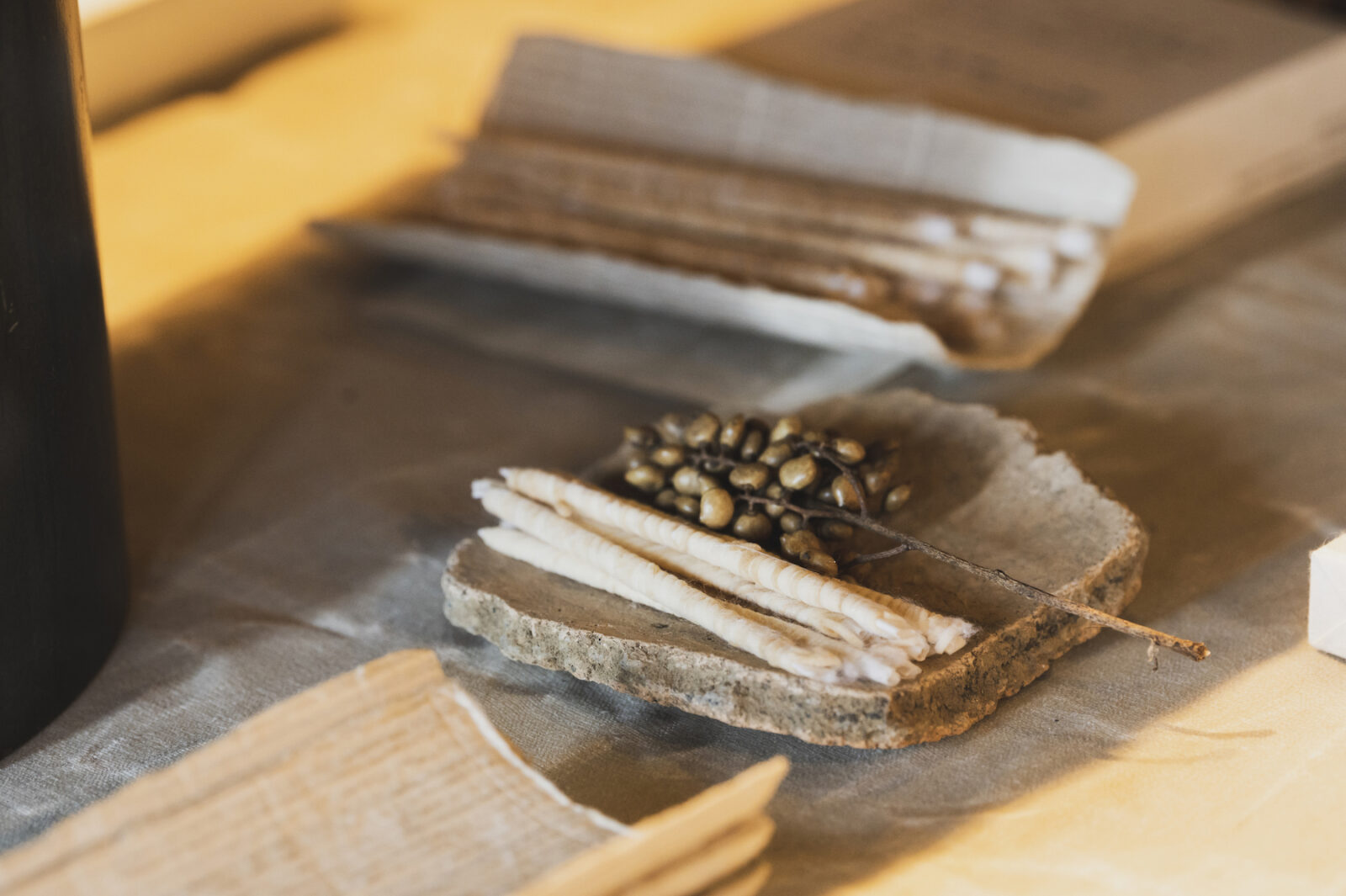
“When you light a Japanese candle, it burns slowly, occasionally making a crackling sound. The flame is larger than that of Western candles, and the unique flickering created when the wick absorbs the wax is what makes Japanese candles beautiful.”
Haze explains that the slow movement of the Japanese candle is like the “fragility of life itself.”
“A Japanese candle burns for about 90 minutes at most. After 90 minutes, it is gone. When I look at a Japanese candle, I become aware of the fact that nothing in this world lasts forever. In our everyday lives, we all experience some down times, but just like the candle, these feelings do not last forever. Looking at Japanese candles has helped me let go of negative emotions.”
“My hope is for people to take a little time out of each day to light a candle to spend looking inwardly at themselves. If one can look at their emotions objectively, one may be able to think about the things that are bothering them as trivial and understand them in a more calm manner. I hope that lighting a candle can help in that way.”
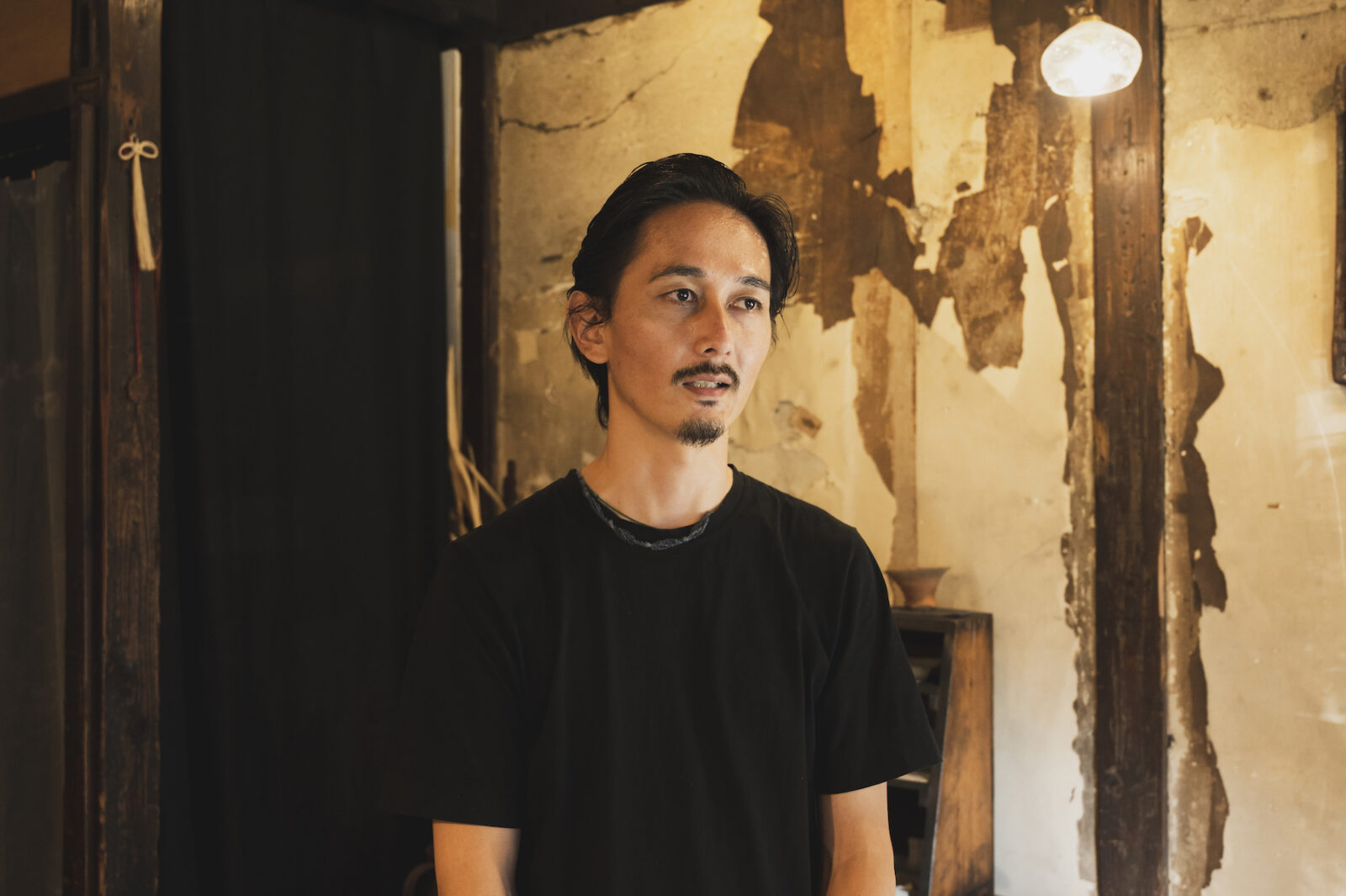
Haze himself says that the most relaxing time of day for him is when he lights incense and a candle and enjoys a cup of coffee after dinner. It is true that watching the large flame of the Japanese candle has a calming and relaxing effect.
Passing on a dying tradition to the next generation
Japanese candles have a more stable flame thanks to its thick wick. It produces little soot, and because it burns while sucking up the wax, the melted wax does not drip down the side. It has a different appeal to that of western candles.

Currently, there are only about 10 places in Japan that still make Japanese candles. Furthermore, there are only two companies that produce haze wax and only one company that makes wicks.
The tradition of making Japanese candles is dying out. Haze’s desire to pass this tradition onto future generations comes through in the products at HAZE.

Inside the HAZE shop there are candles with textures unique to Japanese candles and breathtakingly beautiful designs that catch your eye even before lighting them. There are a wide range of candles available, from the “BOTANICAL color” products, made with natural plant pigments, to the “Purifying Japanese Candles,” which are made with material used in purification prayers such as salt, hemp powder, and white sage.

HAZE candles are made using a unique method with two colors of wax that forms a gradient from top to bottom.
Haze names the candles to express seasons, landscapes, and instinctual feelings. Some examples are “Kumoma” (between the clouds), “A-un” (respiration), and “Mata Ashita” (see you tomorrow.” Being in his shop is much like being in a gallery and looking at pieces of art.

From corporate life to self-taught candle maker
Haze moved from Nara to Tokyo in his 20s and worked in a video production company as a full time employee. However, when the Great East Japan Earthquake hit in 2011, his view on life changed dramatically.

“It was not that I did not enjoy my job, but I did not feel that I was contributing to society in a meaningful way. When the big earthquake hit, I realized that there is never a guarantee for tomorrow and I wanted to use the rest of my life pursuing something that is beneficial to others. When I thought about what that might be, I realized I wanted to master the craft of making Japanese candles and promote it because it was something I personally find to be very valuable.”
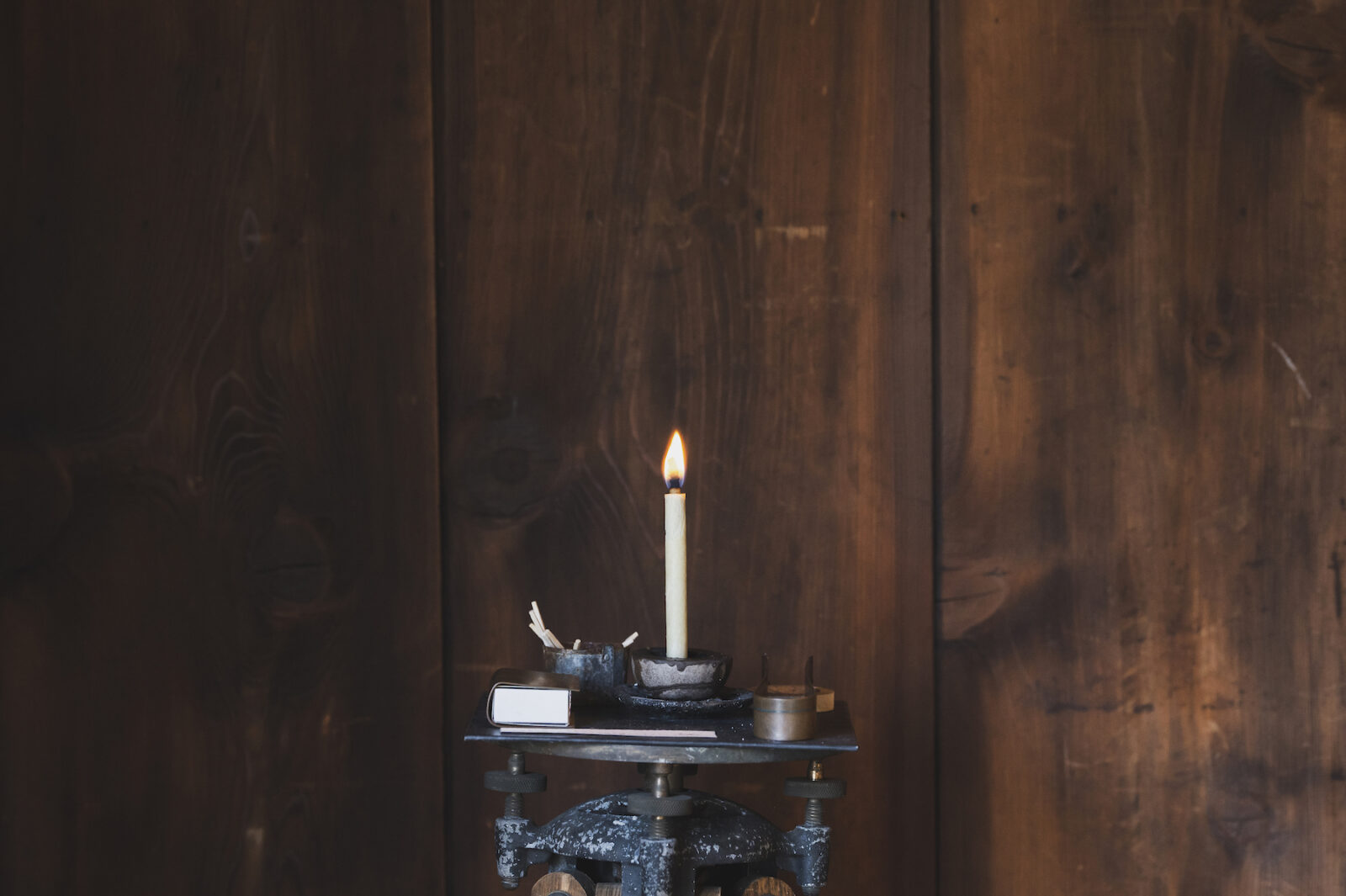
Haze’s hometown is in Nara and his house always had Japanese candles on their Buddhist altar. He once gifted his coworker in Tokyo a Japanese candle from Nara and his coworker was extremely pleased. It was that moment where he felt confirmation that the attraction he felt toward the Japanese candles he grew up with was genuine.
Japanese candles were always a part of his life, and together with the coworker that shared his excitement for seeing a Japanese candle for the first time, they started the company HAZE.

“It is a dying tradition that may disappear at any moment so I really wanted to bring it back to life.”
At first, he tried to get an apprenticeship with a Japanese candle craftsman. He called various companies and workshops around Japan to ask if there were any open positions, but most of them were family run businesses and he was rejected by all of them.
“I tried researching how to make Japanese candles on my own, but there is hardly any literature left on how to do it. The only information I found while searching online was a video of a TV program that was aired decades ago.”
“The TV program showed the owner of the Omori Japanese Candle Shop in Uchiko Town, Ehime Prefecture, making candles. I started by studying his process and copying his movements over and over to make my candles.”
He also got in touch with Araki Seiryo, a Japanese candle maker in Fukuoka Prefecture that has been in business since the Edo Period. They let him study their process and introduced him to companies that manufacture haze wax and candle wicks.
Pure haze wax made with traditional techniques
Haze’s workshop, where he hand makes the Japanese candles, is located in the back of the shop. He showed us the process in which he makes the candles.

The most distinctive process of making Japanese candles is that the wick is covered with wax by hand. The first step is to skewer the wick, which is made of Japanese paper wrapped in igusa pith and cotton. Next, wax is poured on the wick and left to dry.
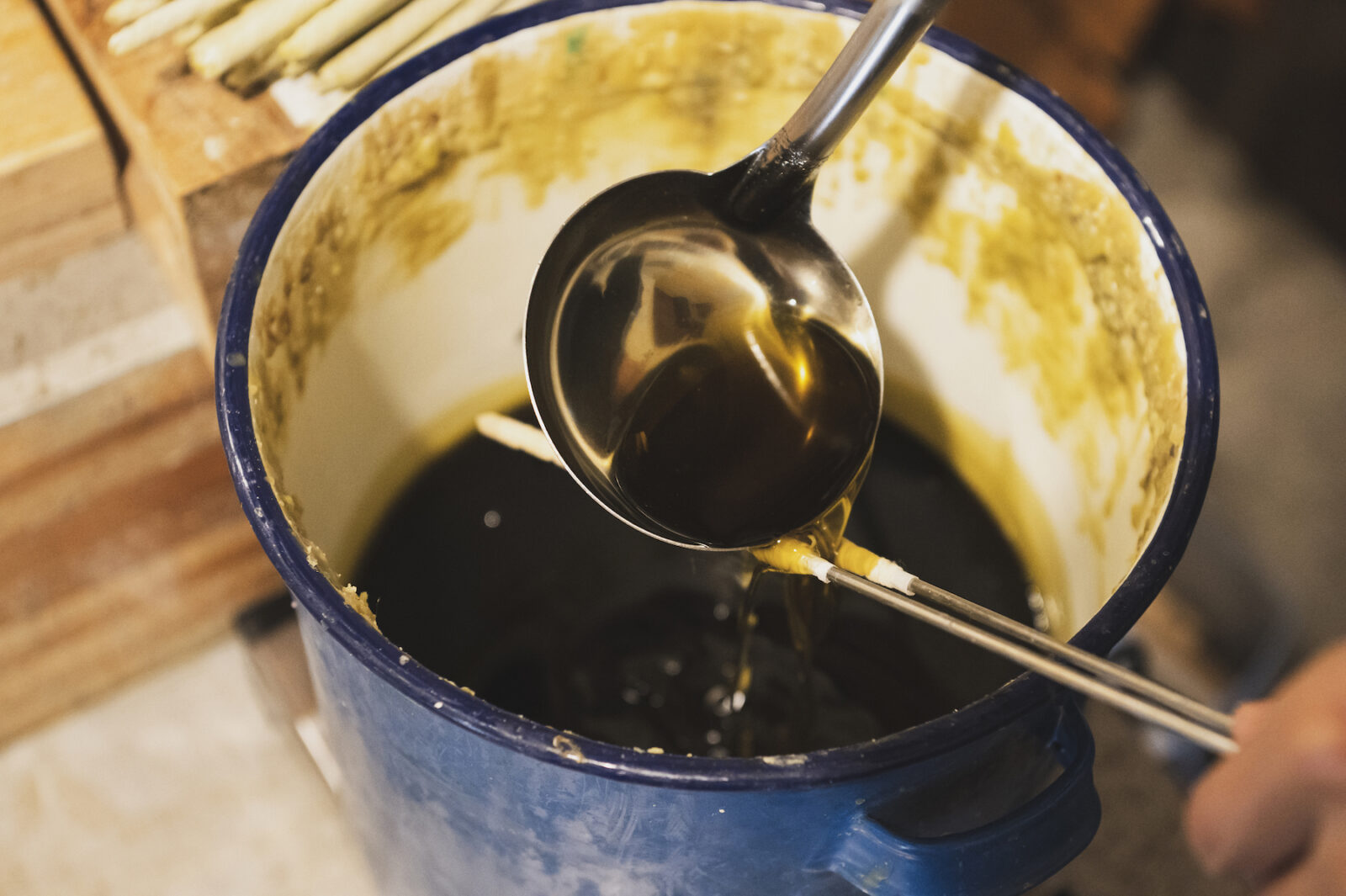
When the wax is completely dry, a number of candles are placed on a board. Wax is poured onto each candle numerous times as it is rotated by hand. This traditional method is called “tegake,” which means “hand poured.” The boiling point of haze wax is only 40 to 50 degrees Celsius, so the process must be done by hand.

The final process is to melt the wax around the tip to expose the wick. Because it takes time and care to make Japanese candles, Haze can only make about 100 a day in the summer and 300 a day in the winter. It takes longer for the wax to dry in warmer temperatures so how many he can make depends on the season.

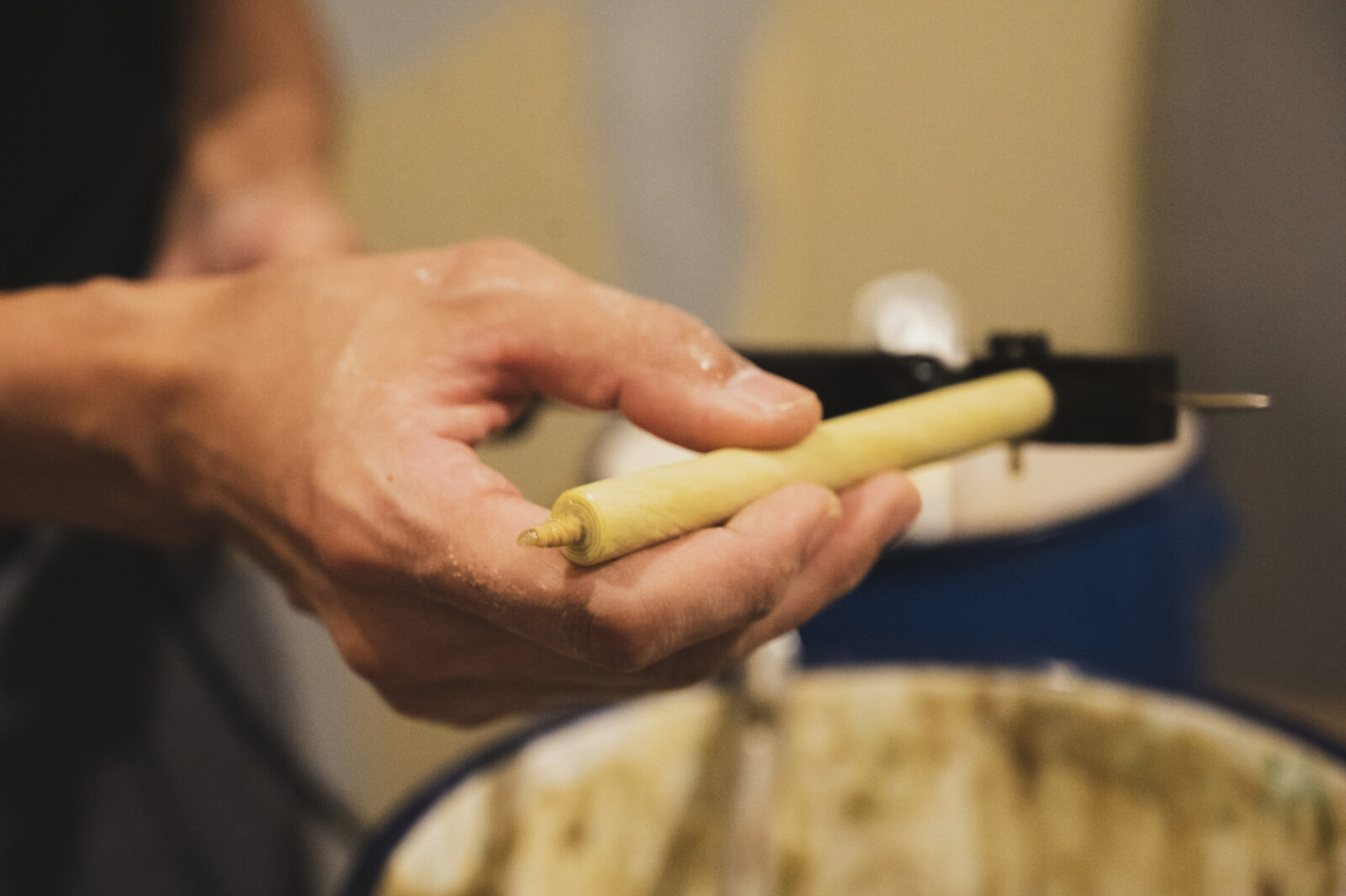
Haze researched the process of making Japanese candles mostly through trial and error on his own. Although the process itself is simple, he says that he struggled in molding them into equal sizes and making the crafting process more efficient.
Protecting the tradition of Japanese candles
Haze started making Japanese candles in 2012, and opened a store and workshop in Kawagoe in 2015. Three years later, after devoting his life to promoting Japanese candle culture to the world, he reached a turning point.
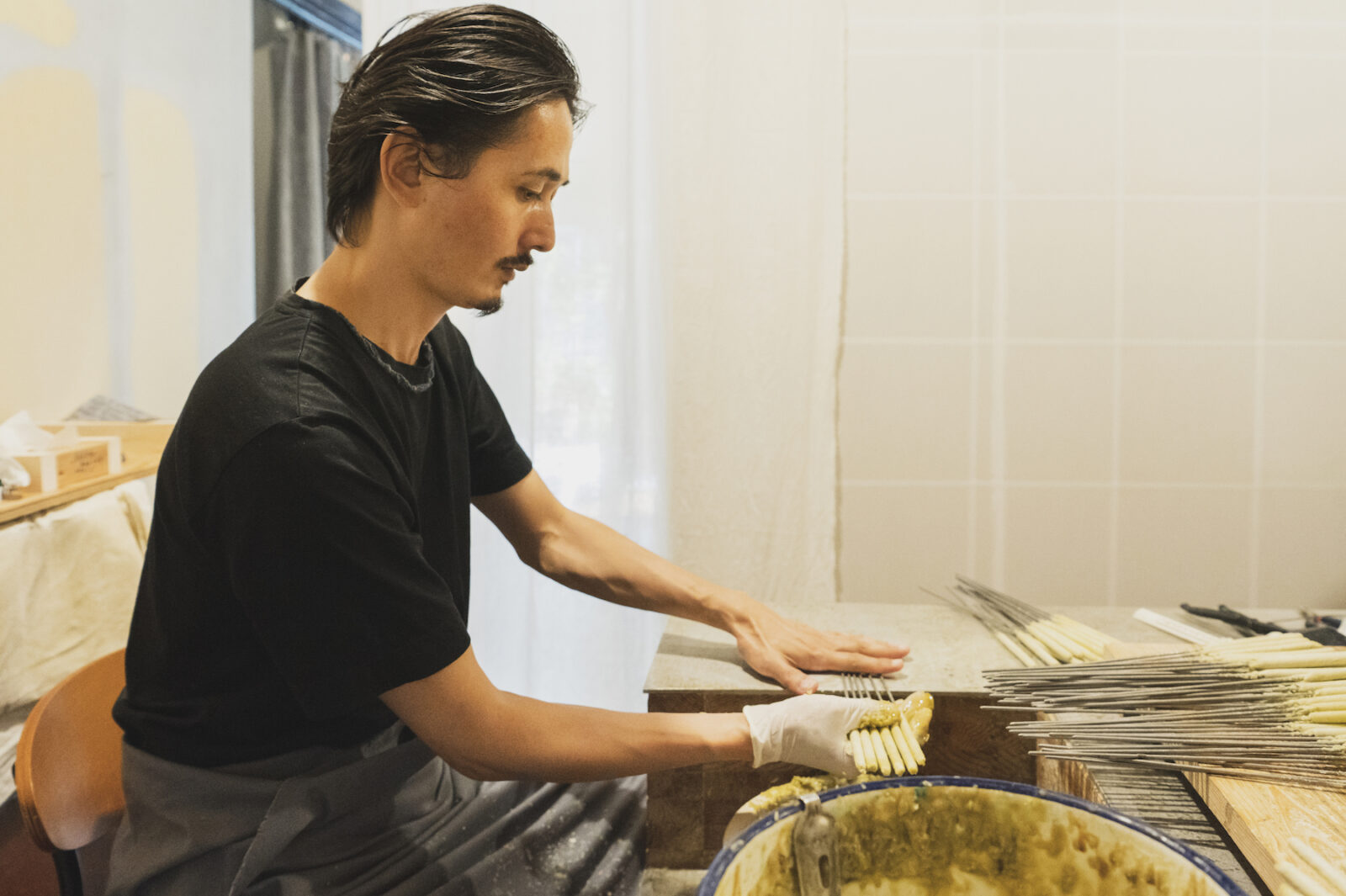
“At first I was not very concerned with money and just focused on keeping this tradition alive for future generations. However, after working hard for about six years, I realized that it will not be possible to pass the tradition along to future generations if it was not a viable business.”
Haze said his determination solidified at this time. He traveled around Japan again to visit and learn as much as he could from various Japanese candlemakers.
Around this time, he started going by the name Haze, his name as a Japanese candlemaker.
“I changed my name in order to not let myself run away from my goals.”

By 2021, he started a subscription service where he delivers Japanese candles on a regular basis to his customers. He offers four courses which not only include Japanese candles, but packages such as “Scent and Light” which comes with incense, and “Taste and Light” which comes with coffee or tea.
He experiments with new genres besides candles, such as making paper and fabrics using wax and creating original art pieces.
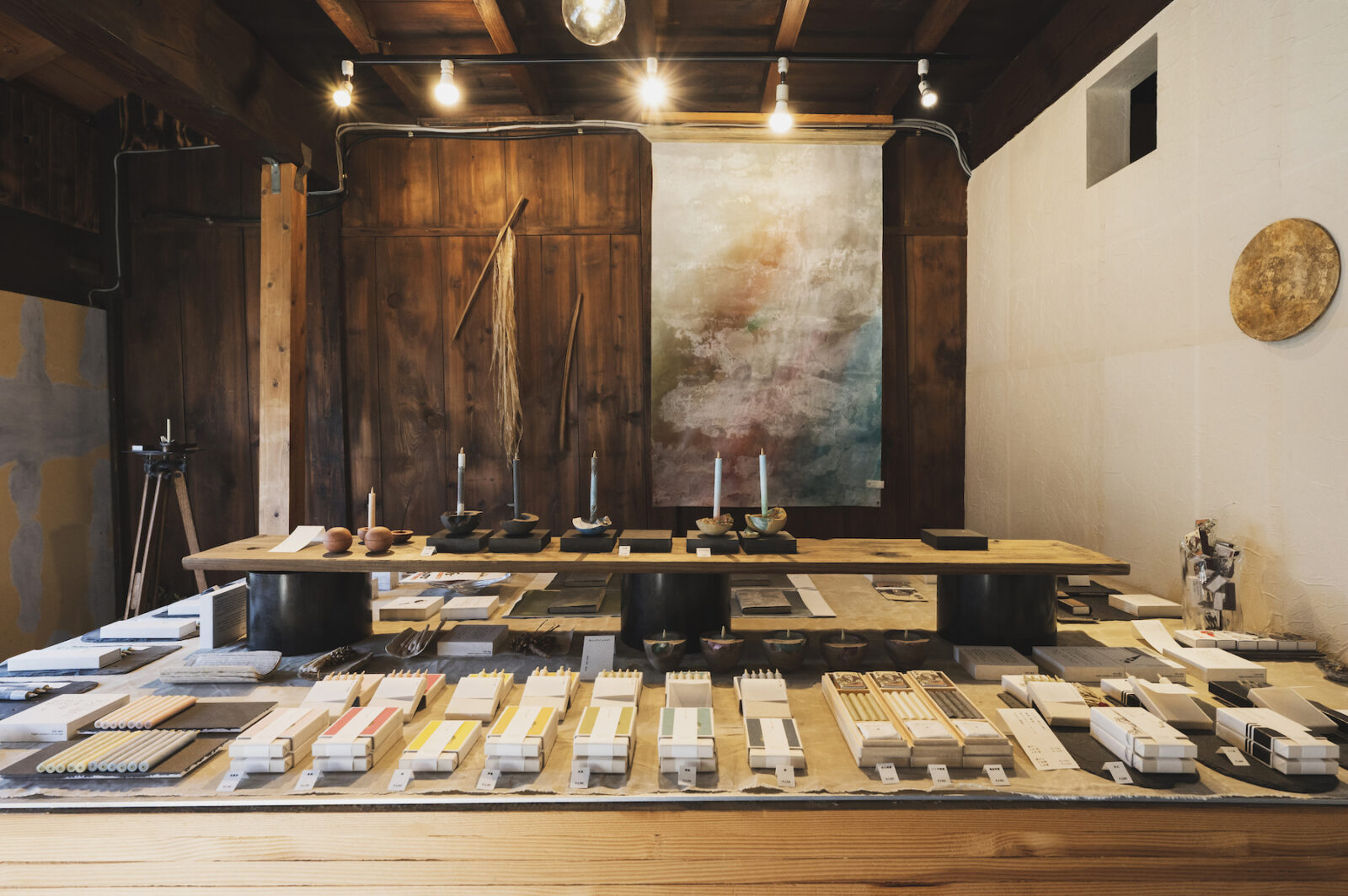
How we can enjoy Japanese candles today
We asked Haze for advice on how people in our world today who lead hectic lives can enjoy Japanese candles. “It seems everyone enjoys it differently. Some people light candles while taking a bath, before they go to bed, and when they are relaxing with a cup of coffee or tea. My hope is that people feel free to enjoy the candles however they want.”

With the recent trend of more people exploring the outdoors, many people are enjoying outdoor fires. The flame of the Japanese candles is similar to that of an outdoor fire and flickers in many ways.
“Fire was essential in the evolution of mankind. Humans are the only species that control fire. Because it is such an essential part of our survival, I think watching fire and flames brings us peace of mind.”
Haze says we “never encounter the same flame twice.”
Once you light a Japanese candle, you will never be bored of watching the flame burn. Simply watching the flickering flame of the candle creates a comfortable time which melts the heart.
Photo: Miharu Saito
Translation: Sophia Swanson
Yuko Souma is the director of Delightful LLC and was born in 1976 in Chichibu City, Saitama Prefecture. Souma began their career working as an assistant to editor and writers at a production company while studying at Waseda University’s Faculty of Letters, Arts and Sciences. In 2004, Souma was an editor and member of the launch team for the free magazine R25 at Recruit Co., Ltd. They left that role in 2010 and has since produced and edited for magazines, books, online publications, booklets for corporations and municipal governments, and owned media.
お茶どころ鹿児島で生まれ育つ。株式会社インプレス、ハフポスト日本版を経て独立後は、女性のヘルスケアメディア「ランドリーボックス」のほか、メディアの立ち上げや運営、編集、ライティング、コンテンツの企画/制作などを手がける。
